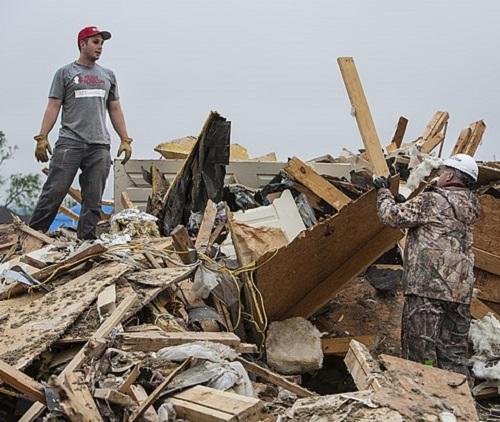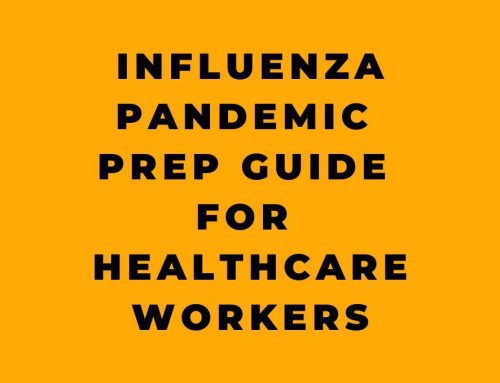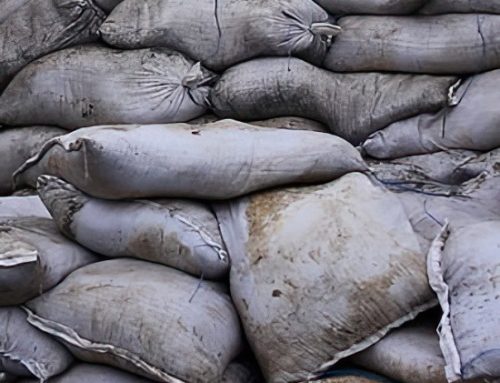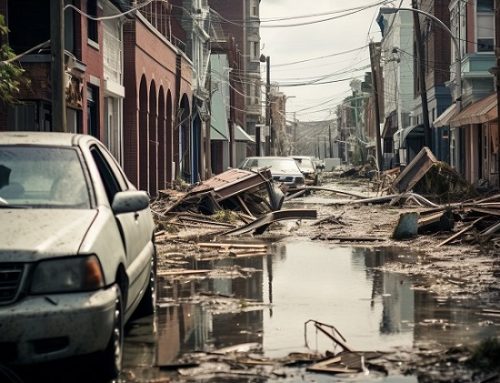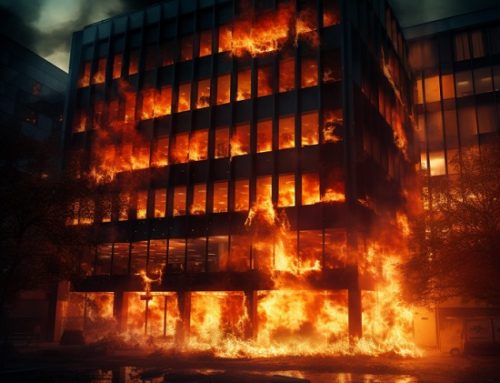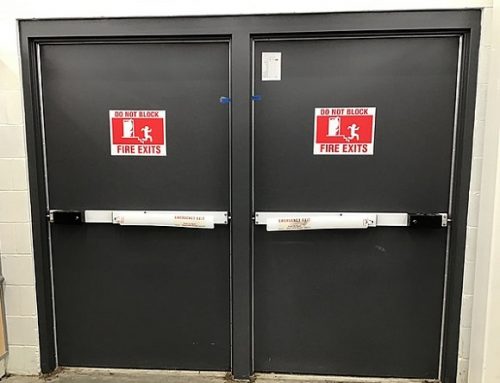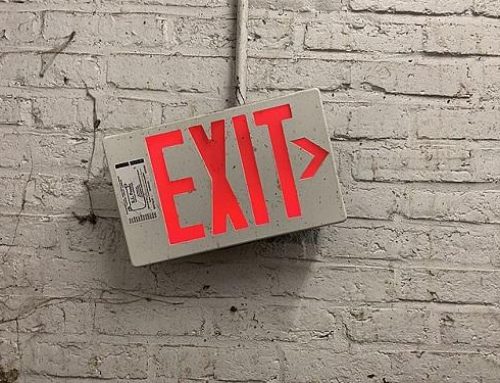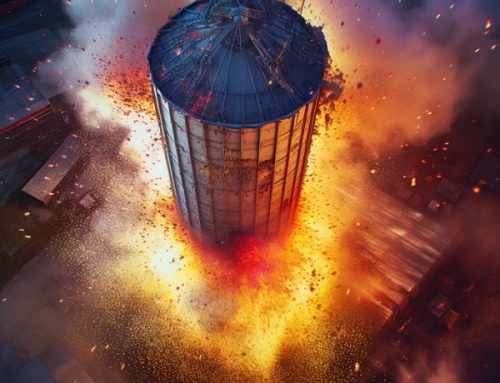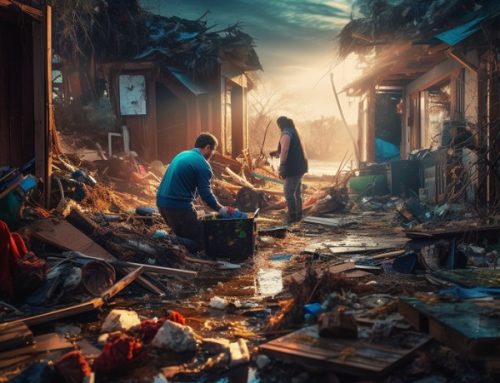When natural disasters like floods, hurricanes, or tornadoes strike, they often leave behind not just physical damage to infrastructure and property, but also significant health and safety hazards. As communities band together to clean up, recover, and rebuild from the destruction, the workers involved in these activities face serious risks that must be addressed.
This article provides an overview of the various dangers present after disasters, specifically in cleanup and recovery operations, and the measures employers and workers should take to ensure safety on the job. We’ll examine common post-disaster hazards, highlight OSHA protocols, review proper protective equipment, and outline additional workplace rights and responsibilities regarding occupational dangers.
The Dangers of Disaster Sites
Before delving into the specific hazards, it’s critical that all employers and workers assess the work area first. Make note of potential chemical contaminants from flooded industrial and waste sites, toxic mold in water-damaged buildings, dangerous wildlife entering inhabited areas, and more. Always assume floodwaters are contaminated unless proven otherwise.
Employers must then provide appropriate protective gear, training, and information to employees to mitigate these dangers. Failing to do so violates federal Occupational Safety and Health Administration (OSHA) regulations that mandate a workplace free from recognized hazards. Workers also have a right to report any concerns about employer violations or dangers on a jobsite.
So what are the potential risks facing disaster cleanup and recovery crews?
Contaminated Floodwaters Flooding brings health problems beyond just the water damage itself:
- Bacteria, viruses, and other infectious organisms thrive in floodwaters contaminated by sewage overflow. Workers can face gastrointestinal, respiratory, and wound infections if exposed.
- Hazardous chemical contaminants come from flooded industrial areas, farms, gas stations, and waste sites. Pesticides, oil, gasoline, and various toxic substances get picked up by floodwaters.
- Mold and other fungi grow rapidly in damp, water-logged buildings. Spores from mold can cause upper respiratory tract infections and allergic reactions.
Before allowing any employee to handle contaminated materials, equipment, buildings, or floodwaters, employers must provide:
- Proper waterproof boots, impermeable gloves, protective clothing, goggles to avoid direct contact with skin or eyes
- Respiratory protection like a NIOSH-approved N-95 filtering facepiece respirator when handling mold
- Access to clean drinking and washing water
- Up-to-date tetanus shots
- Training on how to identify hazardous conditions and safely perform duties
- Safe disposal protocols for visibly contaminated or water-damaged items
Electrical and Power Hazards
Floods, winds, and other disasters often knock down power lines and electrical infrastructure. This can create two major risks:
- Electrocution or electric shocks from any downed lines or objects touching live wires, like tree branches
- Burns or inhalation poisoning from portable generators used during extended power outages
For downed power lines:
- Designate and mark off hazard zones near fallen electrical wires until lines are fully de-energized
- Assume all wires or objects touching lines are energized and live until proven otherwise
- Let trained power company or utility workers handle repairs
For generators:
- Never operate portable gasoline/diesel generators indoors or in enclosed spaces due to carbon monoxide (CO) poisoning risk from engine exhaust
- Ensure adequate remote fuel storage and refueling protocols
- Inspect electrical cords to guarantee proper grounding; use ground-fault circuit interrupters (GFCIs)
- Confirm areas have adequate ventilation for operation
Tree Trimming and Removal
Uprooted trees, broken branches, and blown refuse turned into dangerous debris across disaster zones. These can come down on workers clearing the wreckage or block roads and structures. Additional hazards include:
- Electrocution if branches or tools contact live power lines
- Struck-by injuries from falling tree limbs
- Kick back from chainsaws and injuries from heavy equipment like wood chippers
- Sprains and strains when manually moving heavy logs or branches
To promote safety:
- Contact utility company to de-energize any nearby power lines before trimming or removing tree debris
- Establish and mark designated hazard zones where branches could fall onto workers
- Use appropriate gear like hard hats, work gloves, protective eye wear and footwear, hearing protection, chaps when operating a chainsaw
- Maintain situational awareness at all times when in the drop zone
- Allow only trained workers to use dangerous equipment like chainsaws and chippers; never reach into an operating chipper feed
- Be extremely cautious of chainsaw kickback; don’t attempt to cut with the saw tip
Slip, Trip and Fall Hazards
During cleanup of disaster sites, workers must often perform duties at great heights, on unstable piled debris, and across slick surfaces. These situations increase the risk of falls and injuries or deaths. For example:
- Falls from elevated work platforms, scaffolding, ladders, steep roofs
- Slips on wet, mucky ground or tripping over storm debris.
To improve safety:
- Follow proper mechanical lift protocols with railings and full-body harness tied off to the boom or basket.
- Maintain three points of contact on ladders, place on secure flat base
- Wear slip-resistant sturdy work boots with good traction
- Be aware of poor footing and scattered debris fields
Vehicle Traffic and Heavy Equipment Areas
Many relief workers converge in tight spaces using heavy machinery and large vehicles to move supplies and clear roadways after disasters. This introduces collisions between workers-on-foot and traffic/equipment. Workers are also at risk inside vehicles if proper protocols aren’t followed. Some safety measures include:
- High-visibility safety vests, hard hats, delineators, and barricades to mark work zones
- Adequate lighting, spotters, and communication on the work site
- Proper operator training
- Vehicle restraints like seat belts and rollover protections
Other Dangers in Disaster Recovery Projects
Additional hazards facing workers in post-disaster rebuilding projects involve construction sites, confined spaces, excavations, and physically-intensive activities. For example:
- Inhaling asbestos dust during demolition without proper respiratory protective equipment or training
- Suffocation hazards in unventilated confined spaces like storm drains
- Trench collapses and excavation slides
- Back injuries, sprains, and other musculoskeletal disorders from manually moving heavy debris or construction materials
Mitigation tactics should include:
- Selecting appropriate personal protective equipment (PPE) for the task and environment
- Following permit-required confined space protocols and precautions
- Using sloping, shoring, or soil protections to avoid excavation cave-ins
- Employing safe lifting techniques or teams to address heavy loads
Worker Rights to a Safe Workplace
All employees have basic rights under the Occupational Safety and Health (OSH) Act of 1970, which mandates companies provide workplaces free from recognized dangers. Workers can request hazard reviews by OSHA inspectors if they believe employers violate these safety rules and protocols.
Some key rights to highlight include:
- Refusing to work in conditions employees believe present imminent danger
- Reporting injuries, deaths, illnesses tied to workplace hazards
- Participation in OSHA workplace inspections and investigations
- Access to information on injuries, illnesses, hazards, and safety standards at their work site
- Protection from retaliation for exercising safety rights or voicing concerns
If questions arise about workplace dangers or how to abate them, call the toll-free OSHA hotline at 800-321-OSHA (6742). OSHA provides assistance, guidance, and recordkeeping to help both employers and employees address occupation hazards.
Staying Safe During Cleanup Starts with Preparedness
Recovering from disasters poses many known dangers, but with proper planning, training, and protective equipment, worksites can manage the risks. Always assess worksites for hazards unique to the incident and location. Provide appropriate PPE for the anticipated dangers. Ensure regular safety talks and preparedness drills happen before disaster strikes as well.
Most crucially, employers should empower workers to actively participate in safety decisions without fear of retaliation. When organizations foster a culture focused on health and safety from the top-down, they create workplaces ready to weather any


